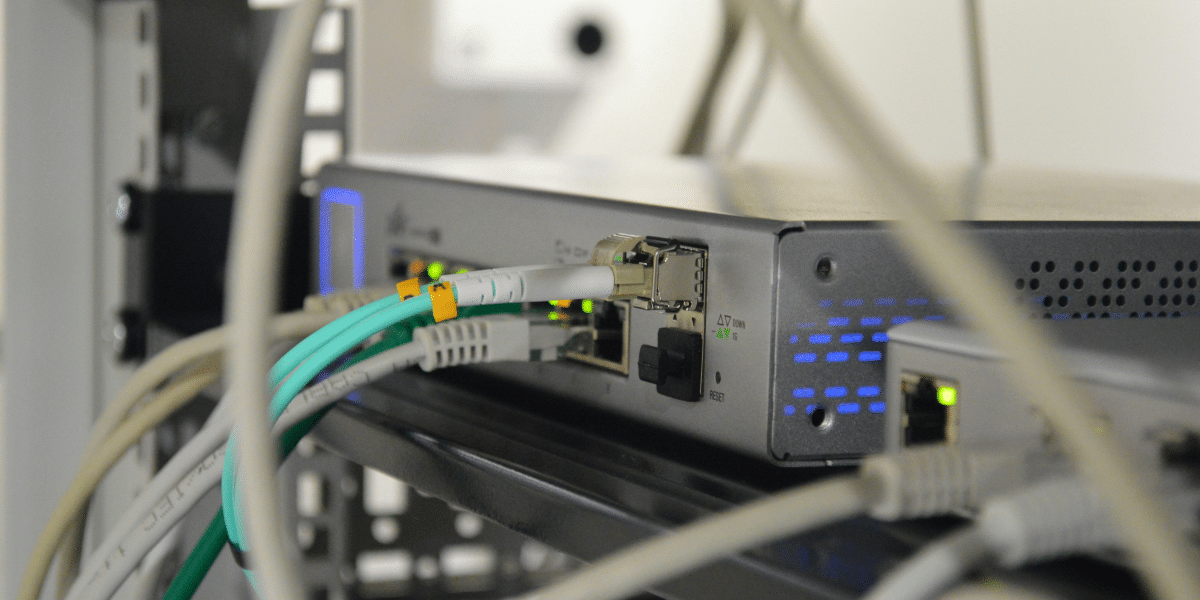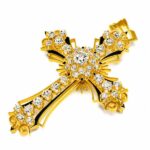By: SEO Mavens
What is an Ethernet Splitter?
An Ethernet splitter operates by using the inactive pairs of wires in 5e or 6 Cat cables to send two separate Ethernet signals on a single cable. It is standard for an Ethernet cable to have four twisted wire pairs. However, only a maximum of two wired pairs is used in standard 100 Mbps Ethernet connectivity. The remaining spare pairs are used to pass a second 100 Mbps ethernet signal, thus enhancing the ability of a single cable. As a point to note, three Ethernet Splitters are required to be used together with only two Ethernet splitter units at any one time.
If you are looking for more information about ethernet splitter go here right away
Types of Ethernet Splitters
There are two primary types of Ethernet Splitters:
- Passive Ethernet Splitters: This is a form of a splitter that does not use an external power source, and this is only due to how the wires are arranged. Economy, simple and uncomplicated devices for the splitter but are limited by the data transfer rate (100Mbps).
- Active Ethernet Splitters: A standard unit requiring power, which also contains active parts which take care of the signal division optimally. Splitters work better with greater data transmission rates and offer greater flexibility in application parameters.
View AscentOptics for More Details
Common Use Cases for an Ethernet Splitter
Ethernet Splitters are often used when there is a requirement to connect several network devices and only one Ethernet cable can be used. Usually, these include:
- Home Networking: When there are multiple rooms and available Ethernet ports, users need to connect several computers or devices without running and installing more cables.
- Small Office Setups: When connecting a PC and a VoIP phone on the same junction box with a single cable drop to avoid excess cable.
- Temporary Network Expansions: To allow one-off or temporary widening of the network with more connections without major recabinetting.
In short, Ethernet Splitters help to ensure that even the existing Ethernet systems are made use of fully, especially when it is not possible to extend the Ethernet cabling system any further.
What is the Difference Between an Ethernet Splitter and an Ethernet Switch?
When to Choose an Ethernet Splitter vs an Ethernet Switch?
There are some clear differences and similarities between the two, especially when one needs to choose between an Ethernet Splitter and an Ethernet Switch, which requires certain circumstances. In this case, the Eth-lan Splitters work for straightforward and inexpensive use cases when the network usage is limited, for example to connect two devices in places that already have cabling placed as a limitation. Ethernet Switches are appropriate in situations where more elaborate networking requirements are needed, mostly due to the provision for many ports, higher rates of data transmission and better control of the network. These are suitable for places where performance, scalability and reliability are of the utmost importance. Business networks, data centers and large home networks, for instance.
Performance Comparison: Ethernet Splitter vs Switch
Ethernet Splitter:
- Data Transmission: Serves two Ethernet links by modifying one Ethernet link for the limitations of longer connections but does not exceed 100 Mbps.
- Power Supply Requirements: Passive splitters are self-powered while active types require to be powered.
- Connectivity: Geographically limited splitting of the connectivity without or including any level of data management.
- Service Area: Basic configurations with low network traffic.
Ethernet Switch:
- Data Transmission: Assists in achieving higher speeds than earlier or similar devices (which is usually 1 Gbps or more) thus ensuring that data transfer is speedier and more dependable.
- Power Requirement: Needs power.
- Connectivity: Allows many ports and handles the data flow effectively, which lessens network congestion.
- Usage: Recommended for complex networks with many devices requiring more bandwidth.
Pros and Cons of Using an Ethernet Splitter
Advantages:
- Cost: Besides having a lower cost than a switch, Ethernet Splitters can be considered to be a cost efficient equipment for the basic needs.
- Usability: Equipment that can be installed and used with little or no complicated setting up.
- Compactness: Small and lightweight devices that can be set up and torn down within short notice.
Disadvantages:
- Speed: Usually limited to the connection of 100 Mbit/s. Usually not adequate for applications where high speed internet is essential as well as heavy data applications.
- Low Level Management: Management system is not very sophisticated resulting to wasteful networks.
- Simplicity: The device is not suited for networks which are going to have more and more devices or tend to become complex.
How to Set Up an Ethernet Splitter?
Basic Requirements for Setup
Below are the basic components that one will need in order to properly install an Ethernet splitter:
- Ethernet Cables: Make sure that there is enough Ethernet cables to attach all the devices and the splitter.
- Ethernet Splitter: An Ethernet passive splitter that is to enable the user to split already existing Ethernet connection.
- Network Ports: Any unsaturated Ethernet ports in the router/network switch available.
- Devices: The devices, computers, printers, IP cameras etc, which need to be connected to the network.
Steps to Connect Devices Using an Ethernet Splitter
- Connect the Splitter to the Router: Insert one end of an Ethernet cable into an available Ethernet port on your router or switch. The other extremity goes into the input port of the Ethernet splitter.
- Connect Devices to the Splitter: Using more Ethernet cables, attach the devices to the output ports of the Ethernet splitter. As a rule, a single Ethernet signal will be split into this many portions, according to the type of the splitter.
- Check Connections: All the cables must be fastened in order to avoid any disconnection of cables and loss of signal. The only thing that needs checking is if the cables are not damaged and are connected in a proper manner.
- Power On Devices: Power the devices that are connected to the Ethernet splitter. Confirm that these devices are getting network signals by using some of the devices and checking for internet connectivity.
- Test Network Performance: Conduct a speed test or test a data transfer in order to check if the performance of the network is up to what you were expecting. It is important to bear in mind that the total bandwidth will be shared across all the devices that are in connection.
These are some easy steps that can be observed in order to make the connection using an Ethernet splitter efficiently. However, remember that Ethernet splitters are effective in basic networking situations with little more area and high data flow requirement.
Can I Use an Ethernet Splitter for POE Devices?
Power Over Ethernet (POE) is useful in such situations as it liberates data cables from the single responsibility of transmission of data, largely facilitating the connection and placement of certain network-centric devices. It is however, important to note the drawbacks and limitations of using Ethernet splitters with POE wall plates.
Compatibility Issues
Ethernet splitters are made to split data signals but are not able to support the data and power transmission at the same time. This is one of the characteristics of POE. Hence, for a standard Ethernet splitter, it is usually likely that it will not pass through such power that is important for the successful operation of POE systems. This may lead to the failure of the connected gadgets due to inadequate power supplied.
Potential Signal Degradation
Utilizing an Ethernet splitter with POE can also induce deterioration in the quality of the signal. The use of POE always involves the presence of a stable power supply. Since splitters separate the data signal, the power signal may also unintentionally get degraded thus affecting the operation and reliability of the device. However, this limitation becomes a crucial factor especially in cases where there is a need for constant reliable network performance.
Alternative Solutions
For users who wish to increase their network and at the same time use POE devices, it is recommended to use POE switches or POE injectors. These devices are meant to extend the power and data transmission capability of a single Ethernet cable interface without a splitter. Furthermore, POE switches come with several ports equipped with the POE function whereas, the POE injector serves the purpose of adding the POE capabilities to the normal network switch.
To summarize, the ethernet splitter is useful in low power network situations, but it is not useful in POE scenarios where power transmission is required. As for the high power levels of POE, it is more advisable to use POE switches and or injectors in order to achieve proper functioning of the network and the devices.
What to Consider When Shopping for an Ethernet Splitter?
Key Features to Look for in an Ethernet Splitter
When looking for an Ethernet splitter, it is important to take into account the following important aspects as they may influence the performance and the compatibility of the splitter:
- Bandwidth Capacity: Make sure the splitter caters for the required bandwidth for the network. For basic usage the splitter capable of this will suffice up to 100 Mbps, whereas more enhanced desktop applications support bandwidth of 1 Gbps.
- Compatibility: Make sure that the splitter will work with the existing devices and infrastructure. Check the compatibility of the Lady socket extending to the Rj45 cat5e, cat6, etc.
- Build Quality: Choose splitters whose materials are tough so that their life and ability to wear and tear are increased. Quality high end construction can prevent the signal distortion.
- Ease of Installation: Splitters which do not require say drivers to be installed, only plugging them can be preferable.
- Size and Design: Depending on your setup you may prefer a small and simple design which can fit into any small area with high flexibility
Recommended Brands and Models
The following manufacturers and models should be kept in mind as they are considered to be the big names in the Ethernet splitter industry due to their reliability and performance:
- Tripp Lite B078-101-USB-1: Known to be of a sturdy nature while also easy to install, this unit stands out for use in any home or office network.
- TRENDnet TUC-ETG: This gigabit splitter provides good speed hence allowing fast transfer of information, which is ideal for fast working users.
- TP-Link TL-POE10R: This unit itself is a POE splitter. Such a unit has the ability to split network as well as power signals which some POE applications require.
- Belkin F2CD068: As it relates to Belkin’s trust and this model in particular, it is very dependable in working with and supporting numerous Ethernet devices.
- Cable Matters 180020: Designed to connect and be Cat6 compliant, this splitter does not compromise on quality as it minimizes chances of signal losses and downtimes.
Providing such considerations and models into the planning of your network can go a long way in ensuring that such improvements will be equally reliable.
How to Troubleshoot Common Issues with Ethernet Splitters?
Identifying Connectivity Issues with an Ethernet Splitter
In the event that you have connectivity problems related to an Ethernet splitter then there are some problems reevaluation approaches that you can undertake in order to debug the issues. First, you should evaluate the physical connections: detaching and reattaching all cables connected to the cable splitter or the devices it is connected to. Also, check the cables for any physical problems, since such cables should be well insulated to avoid wear and damage from the motion or environmental elements.
Second, check for connectivity to other devices connected to the aforementioned splitter. Compatibility issues may leave you over with partial connections or no connection at all. If possible, check whether such a splitter works with other devices to see if the problem lies on certain devices only.
Changes in network topology may also cause connections to be lost. Please check the particulars of your network identification parameters, including IP address, and DHCP configuration, if any. If they are inappropriate, even if the whole system works perfectly with each unit having its own splitter, all devices may not efficiently distribute information through the splitter.
Resolving Bandwidth Limitations
Bandwidth limitations are one more common disadvantage of implementing Ethernet splitters. When there is a positive copulative utilization of a single port of Ethernet to many devices by use of splitters and there is a congested clean up all at say upper maximum possible, ozxitad .
As such, bandwidth related issues can be handled by implementing the following strategies.
- Upgrade To A Higher Bandwidth Splitter: When upgrading an older or a lower bandwidth splitter, going to a stp capable of gigabit Ethernet 10/100/1000 can bring remarkable differences.
- Manage Network Traffic: Employ quality of service (QoS) settings on your router to manage traffic and allocate enough bandwidth to the critical applications.
- Reduce Network Load: Reduce the number of recorded high bandwidth usages, like streaming as well as huge transfers of data, over the divider devices. This is normally done by making it fit through genies .
- Use Ethernet Switches: Where the need for resources is tremendous consider switching to an Ethernet switch because it gives unique bandwidth to each device connected hence overcoming the merge up bandwidth limitation on splitters.
In addressing these issues in order, your network connectivity by way of use of the Ethernet splitters can be improved.
Published By: Aize Perez

















